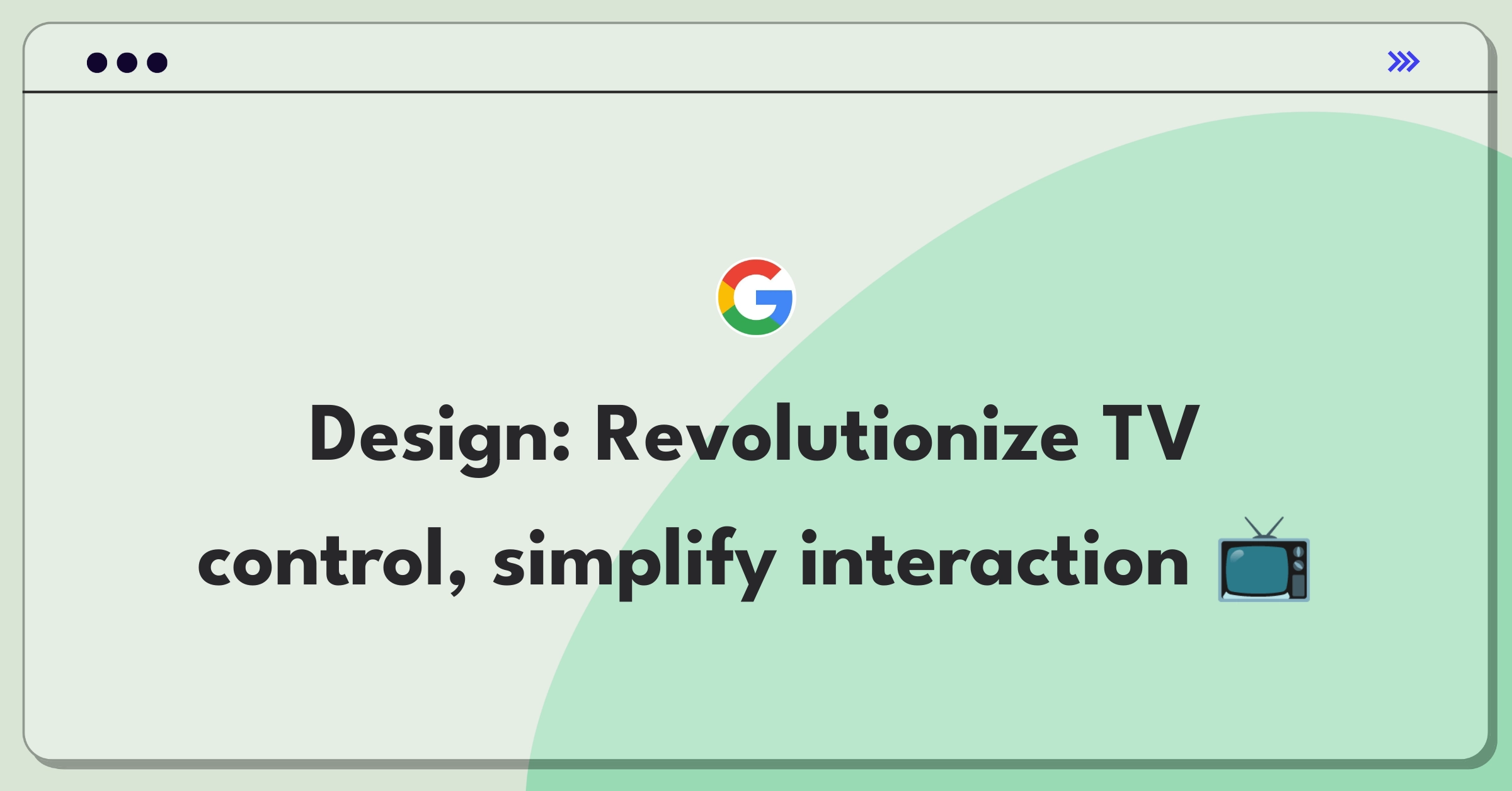Introduction
Redesigning a TV remote presents an exciting opportunity to enhance the user experience in home entertainment. As we approach this challenge, we'll consider the evolving landscape of smart homes, streaming services, and user interaction paradigms. I'll outline a comprehensive strategy for reimagining the TV remote, focusing on user needs, technological advancements, and market trends.
Tip
Does this approach align with your expectations? I'm happy to adjust if you have any specific areas you'd like me to focus on.
Step 1
Clarify Questions (3 minutes)
Why these questions matter:
- Company specificity helps align the solution with brand identity and existing product ecosystems.
- Time and resource constraints inform the scope and feasibility of our redesign.
- Existing data can provide valuable insights into user pain points and preferences.
- Market segment focus helps tailor the solution to specific user needs and expectations.
Hypothetical answers:
- Let's assume this is a generic TV remote redesign for a major consumer electronics company.
- We have a 12-month timeline with a moderate budget for R&D and production.
- We have access to basic user satisfaction data from current remote models.
- We're targeting a mid-range market segment, balancing features with affordability.
Impact on solution approach: These assumptions allow us to focus on innovative yet practical solutions that can be implemented within a reasonable timeframe and budget, while addressing common user pain points in the mid-range market.
Propose the Goal
Given our focus on enhancing user experience in the mid-range market, I believe our goal should be to create a TV remote that simplifies interaction, reduces clutter, and integrates seamlessly with modern smart home ecosystems. Does this align with your vision?
Define the Scope
For this redesign, let's focus on creating a remote that works with smart TVs and streaming devices, emphasizing ease of use and universal compatibility. We'll assume the remote will primarily be used in living room settings and needs to cater to users of varying tech-savviness.
Based on these clarifications, I'll proceed with the following assumptions:
- We're designing for a broad user base with varying technical skills.
- The remote should support both traditional TV functions and smart TV/streaming capabilities.
- We have the flexibility to explore innovative features within reasonable cost constraints.
- The design should consider integration with other smart home devices.
Tip
I'll take a moment to organize my thoughts before moving on to the next step.
Subscribe to access the full answer
Monthly Plan
The perfect plan for PMs who are in the final leg of their interview preparation
$99 /month
- Access to 8,000+ PM Questions
- 10 AI resume reviews credits
- Access to company guides
- Basic email support
- Access to community Q&A
Yearly Plan
The ultimate plan for aspiring PMs, SPMs and those preparing for big-tech
$99 $33 /month
- Everything in monthly plan
- Priority queue for AI resume review
- Monthly/Weekly newsletters
- Access to premium features
- Priority response to requested question


.png)